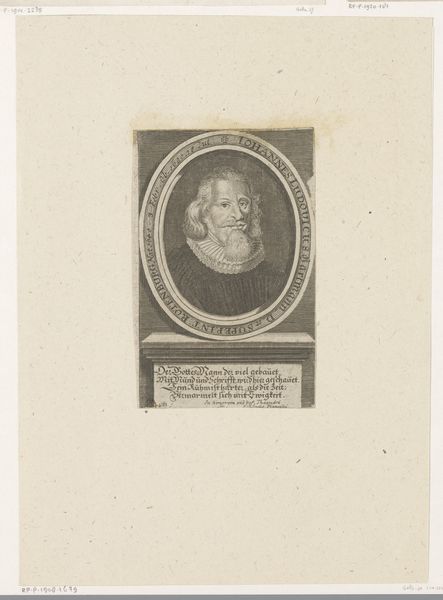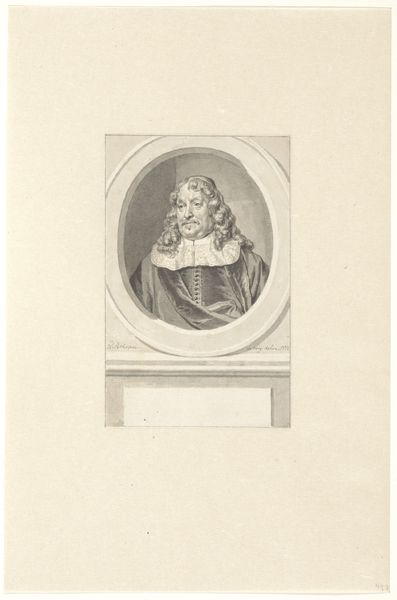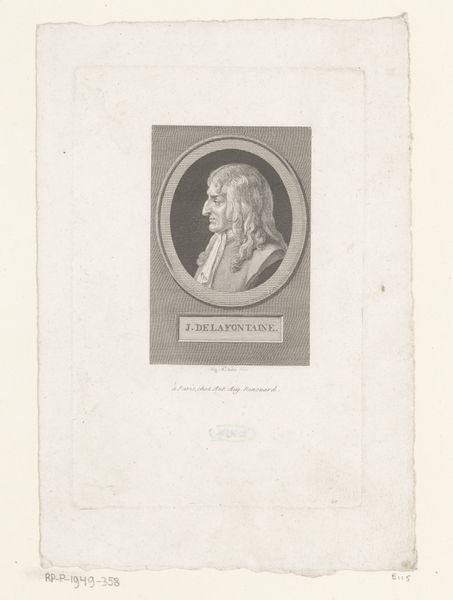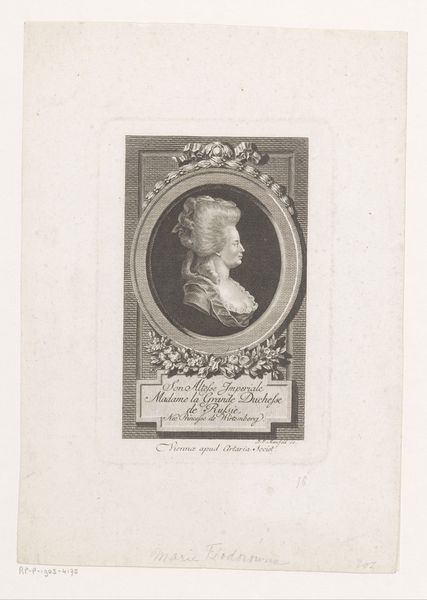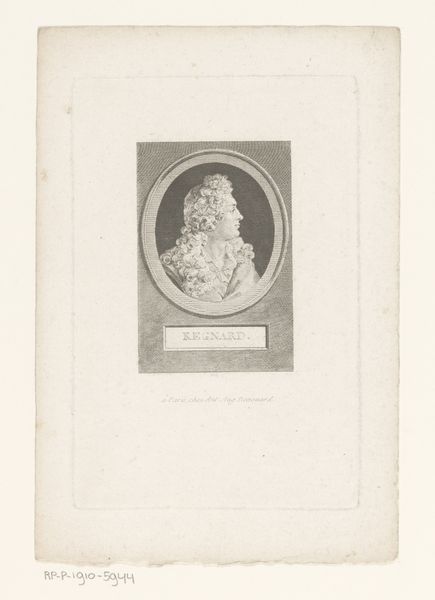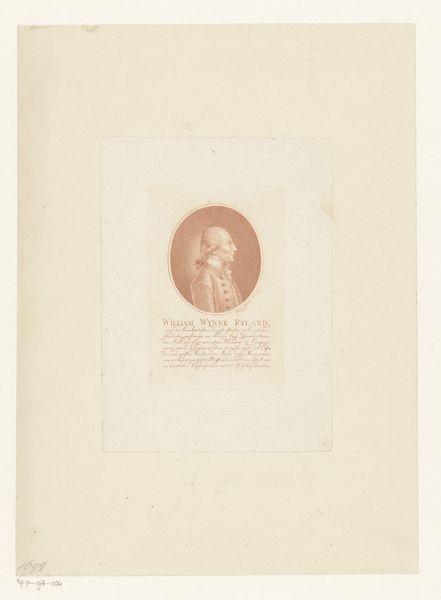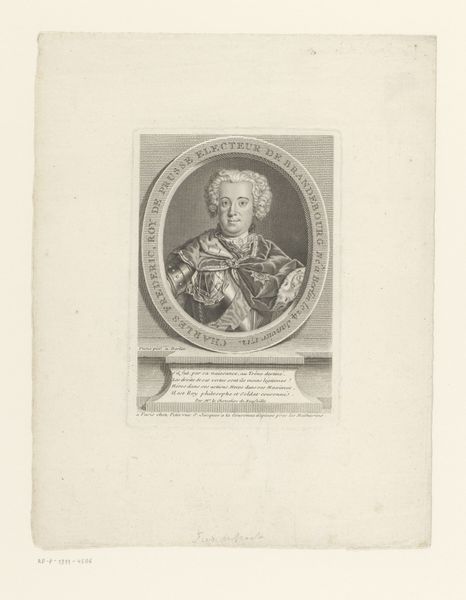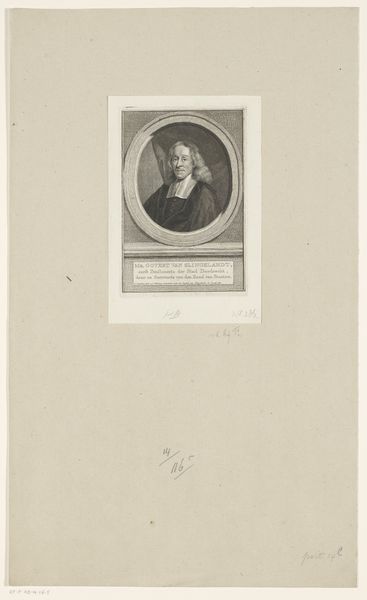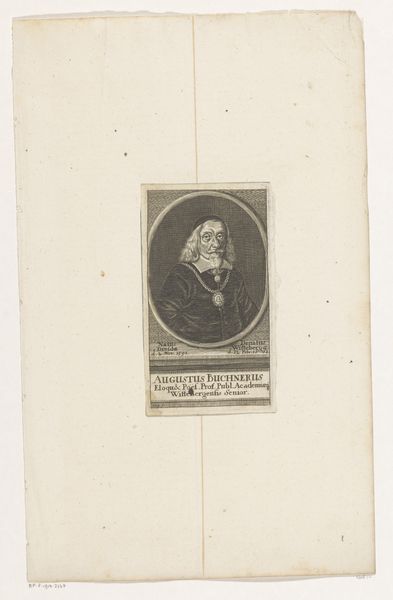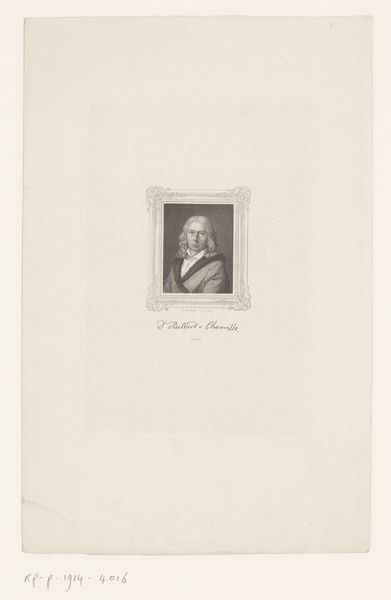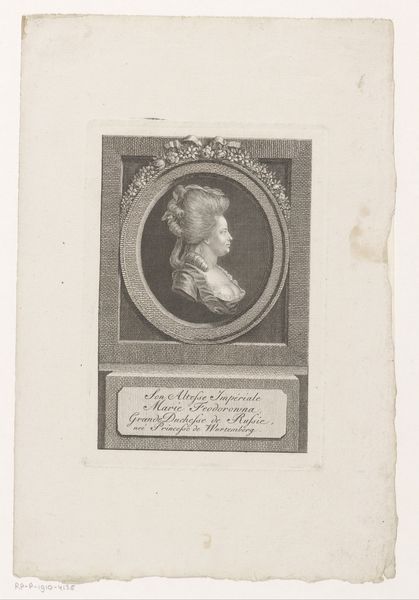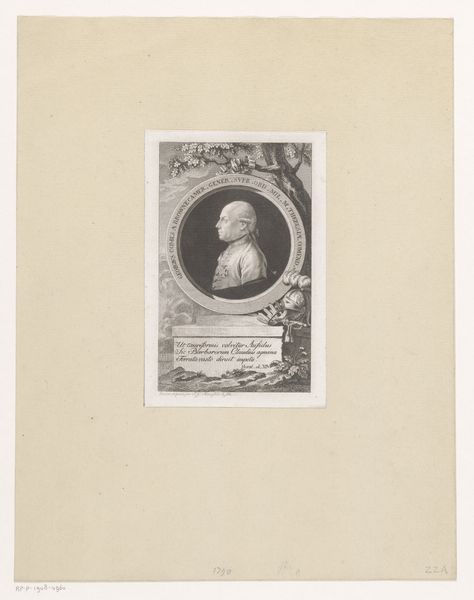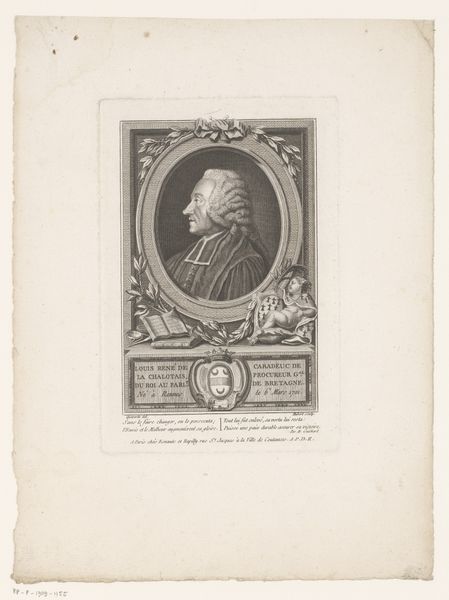
drawing, print, engraving
#
portrait
#
drawing
#
neoclacissism
# print
#
old engraving style
#
engraving
Dimensions: height 173 mm, width 116 mm
Copyright: Rijks Museum: Open Domain
This portrait of Blaise Pascal was made by Augustin de Saint-Aubin using etching, a printmaking technique that democratized image production in the 18th century. To create the portrait, the artist would have first coated a metal plate with a waxy, acid-resistant substance. Using a sharp needle, the artist scratched an image into this coating, exposing the metal beneath. The plate was then submerged in acid, which bit into the exposed lines, creating grooves. Once the coating was removed, ink was applied to the plate, filling these grooves. Finally, the plate was pressed onto a sheet of paper, transferring the image. The fine lines and subtle shading you see here are achieved by varying the depth and density of the etched lines. The result is a repeatable image, capable of being widely disseminated. Think of this portrait, then, as a product of its time—the Age of Enlightenment—when new technologies facilitated the spread of knowledge and ideas. By focusing on the process of production, we gain a richer understanding of the portrait and its place in history, challenging traditional distinctions between fine art and craft.
Comments
No comments
Be the first to comment and join the conversation on the ultimate creative platform.
